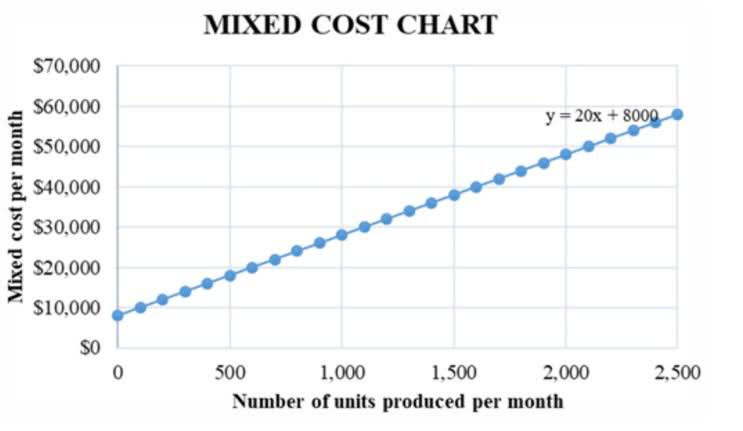
Here are a few tips to help you improve your Accounts Receivable process to cut down collection calls and improve your cash flow. For example, a company wants to determine the company’s accounts receivable turnover for the past year. If a company is too conservative in extending credit, it may lose sales to competitors or incur a sharp drop in sales when the economy slows. Businesses must evaluate whether a lower ratio is acceptable to offset tough times. In that case, you might reconsider your credit policies to possibly increase sales as well as improve customer satisfaction. By the end of this article you’ll have everything you need to analyze how quickly a business collects payments from customers.
- Use this formula to calculate the receivables turnover ratio for your business at least once every quarter.
- Tracking your accounts receivables turnover will help you identify opportunities for improvements in your policies to shore up your bottom line.
- Priceline sells flights, hotels, and related travel services without holding any physical inventory itself.
- Reporting options are excellent in Sage 50cloud Accounting with complete financial statements, accounts receivable, and account reconciliation reports available.
- A higher ratio indicates a company is collecting cash from customers quickly.
- Secondly, the ratio enables companies to determine if their credit policies and processes support good cash flow and continued business growth — or not.
What Does the Accounts Receivable Turnover Ratio Mean?
- It’s important to monitor the AR turnover ratio over time to identify trends and make adjustments as needed to improve the company’s financial health.
- It’s not unusual to have the defense well ahead of the offense at this time of year, but the gap was probably exacerbated over the previous three days because of the two-time league MVP’s absence.
- At the end of the day, even if calculating and understanding your accounts receivable turnover ratio may seem difficult at first, in reality, it’s a rather simple (and certainly important) accounting measurement.
- Ask a question about your financial situation providing as much detail as possible.
- Also known as the “receivable turnover” or “debtors turnover” ratio, the accounts receivable turnover ratio is an efficiency ratio — specifically an activity financial ratio — used in financial statement analysis.
- If it swings too high, you may be too aggressive on credit policies and collections and be curbing your sales unnecessarily.
- Once you have your net credit sales, the second part of the accounts receivable turnover ratio formula requires your average accounts receivable.
If a company loses clients or suffers slow growth, it may be better off loosening its credit policy to improve sales, even though it might lead to a lower accounts receivable turnover ratio. Also known as the “receivable turnover” or “debtors turnover” ratio, the accounts receivable turnover ratio is an efficiency ratio — specifically an activity financial ratio — used in financial statement analysis. It measures how efficiently and quickly a company converts its account receivables into cash within a given accounting period.

Calculating Accounts Receivable Turnover Ratio

If your AR turnover ratio is low, adjustments should be made to credit and collection policies—effective immediately. The longer you let it go, the harder it will be on positive business cash flow. The accounts receivable turnover ratio, also known as the debtors turnover ratio, indicates the effectiveness of a company’s credit control system. Now that you understand what an accounts receivable turnover ratio is and how to calculate it, let’s take a look at an example.
Incentivize cash sales
This is a higher A/R turnover ratio than ABC Company in Sample 1, which means that XYZ is collecting from customers faster than ABC. Like any business metric, there is a limit to the usefulness of the AR turnover ratio. For example, collecting on office supplies is a lot easier than collecting on a surgical procedure or mortgage payment. As we previously noted, average accounts receivable is equal to the first plus the last month (or quarter) of the time period you’re focused on, divided by 2. Since we already have our net credit sales ($400,000), we can skip straight to the second step—identifying the average accounts receivable.
- Net credit sales are calculated as the total credit sales adjusted for any returns or allowances.
- Just watching him on the practice field this week, he looks even more confident and even more locked in.
- In a sense, this is a rough calculation of the average receivables for the year.
- Once you have calculated your company’s accounts receivable turnover ratio, it’s nearly time to use it to improve your business.
- Credit policies that are too liberal frequently bring in too many businesses that are unstable and lack creditworthiness.
Your banker will want to see this track to determine the bank’s risk since accounts receivables are often used as collateral. A higher accounts receivables turnover ratio will be considered a better lending risk by the banker. Like other financial ratios, the accounts receivable turnover ratio is most useful when compared across time periods or different companies. For example, a company may compare the receivables turnover ratios of companies that operate within the same industry. In this example, a company can better understand whether the processing of its credit sales are in line with competitors or whether they are lagging behind its competition.
Understanding AR turnover ratios
If Trinity Bikes Shop maintains a policy for payments made on credit, such as a 30-day policy, the receivable turnover in days calculated above would indicate that the average customer makes late payments. A “good” accounts receivable turnover ratio varies by industry and company size. In general, a ratio that is higher than the industry average or that shows a consistent trend of improvement is a/r turnover formula considered a positive sign. AR professionals are responsible for collecting the money your company is owed by customers, vendors, or other entities. If the payer doesn’t get the funds to your organization in a timely manner, it could put your entire business in jeopardy. Businesses cannot provide goods or services without getting paid for them – that’s one of the first facts of doing business.
- Get instant access to video lessons taught by experienced investment bankers.
- If a company generates a sale to a client, it could extend terms of 30 or 60 days, meaning the client has 30 to 60 days to pay for the product.
- It is a quantification of a company’s effectiveness in collecting outstanding balances from clients and managing its line of credit process.
- By learning how quickly your average debts are paid, you can try to determine what your cash flow will look like in the coming months in order to better plan your expenses.
- A debtor’s turnover ratio demonstrates how effective their collections process is and what needs to be done to further collect on late payments.
- The AR balance is based on the average number of days in which revenue will be received.
Big and small companies alike can benefit from making small friendly gestures like a friendly call or e-mail to check in. Understanding inventory and how quickly it is turned into sales is especially important in the manufacturing industry. In one survey, firms that make defense and aerospace components ranked highest in terms of having the highest inventory turnover ratios. General Dynamics (GD) has a reputation as one of the best-run firms in the industry and has reported an inventory turnover ratio in the single digits for over a decade.
One of the main calculations that AR experts – which play a different part than your AP team – lean on when making these decisions is the Accounts Receivable Turnover Ratio. If you’re not recalculating the receivables turnover ratio on a regular basis, you’re leaving your company open to vulnerabilities and unnecessary risk. Luckily, using the receivable ratio turnover formula in your business is fairly straightforward and something that can be implemented right away. Accounts receivable turnover and inventory turnover are two widely used measures for analyzing how efficiently a firm is managing its current assets.
Comments are closed, but trackbacks and pingbacks are open.